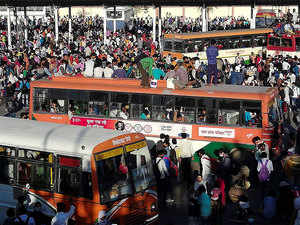
Beyond these broad points, the key question is whether the package is good enough to help the poor tide over the hardships resulting from the lockdown.
Related
- View: It is time for states to step up and provide the much-needed covid relief

By Arvind Panagariya
The Covid-19 epidemic, which originated in China in December 2019, has now reached 175 out of a total of 195 countries. No past pandemic has spread this widely and this fast. And we are far from seeing the proverbial light at the end of the tunnel. Until a definite cure and vaccine against the virus are found, the threat will loom.
India, too, is in the middle of this calamity. An extraordinary challenge requires an extraordinary response.
Thankfully, Prime Minister Narendra Modi has acted decisively and confidently. India is now on a 21-day lockdown. Short of this action, risks for India were huge. Modi couldn’t have been more right when he said that without the 21-day lockdown, the nation risked being set back by 21 years.
To be sure, the lockdown asymmetrically disadvantages those living hand-to-mouth. One can argue that even the poor can survive for a week with the help of their better-off neighbours, fellow villagers and those for whom they work.
But a period of three weeks without a source of income can result in starvation. Therefore, unsurprisingly, the Rs 1.7 lakh crore package that finance minister Nirmala Sitharaman announced focuses almost exclusively on assisting different vulnerable groups in both rural and urban India. In assessing the package, two broad points must be kept in mind.
First, for its per-capita income, India has an elaborate network of schemes aimed at assisting the poor. Not all schemes work well. Nevertheless, with big leakages along the distribution chain in them plugged in recent years, and some effective new schemes such as Ujjwala and Pradhan Mantri Kisan Samman Nidhi (PM-KISAN) launched, the poor do have some cushion. The package just announced is on top of that cushion.
Second, GoI has shown excellent judgement in being explicit about the time-bound nature of the package. Accordingly, all benefits have a life of three months. Successive governments have shown great reluctance in withdrawing social programmes once they have been launched, no matter how inefficient they may be. But given its fiscal resources, GoI can ill-afford to extend the announced benefits beyond the duration of the crisis.
Some may argue that three months is longer than necessary, since the lockdown is for only three weeks. But that view would be myopic. There is much uncertainty about how the coronavirus situation will evolve. The lockdown itself may have to be extended. And, even if not, resumption of economic activity to pre-coronavirus level will take some time.
Beyond these broad points, the key question is whether the package is good enough to help the poor tide over the hardships resulting from the lockdown. My short answer is yes. Most citizens understand that they must cut back on their needs during a national emergency. The poor are no different.
As long as they, and their children, can get daily meals, they will postpone other consumption. From this perspective, the most important component of the package is the provision of 10 kg of food grain and 1 kg of lentils per month per person under the public distribution system (PDS).
According to the household expenditure survey of 2011-12 by the National Sample Survey (NSS), the latest such survey available, monthly cereal consumption in India is below 10 kg per person across all income classes in urban India and 10-12 kg in rural India.
To turn food grain and lentils into meals, households need cooking fuel. Accordingly, the package includes a free liquefied petroleum gas (LPG) cylinder per month for three months for 83 million below-poverty-line households.
Beyond the provision of meals, the package offers modest additional assistance to different vulnerable groups in both rural and urban areas. The first instalment of Rs 2,000 under PM-KISAN, due in 2020-21 to 87 million farmers, will be front-loaded and transferred on April 1. GoI will transfer another Rs 500 per month to 200 million women in their Jan Dhan accounts. Some 30 million widows and senior citizens will receive Rs 1,000 over the next three months.
State governments are to use a sum of Rs 31,000 crore available in the welfare fund for building and construction labourers to assist the latter. To help smaller enterprises and their employees, GoI will cover both employee and employer in Employees’ Provident Fund (EPF) contributions, amounting to 24% of wages, for the next three months.
This package, and the one that would be required to assist the industry to stay afloat during the crisis, are certain to test the limits of financial resources of the government at a time when it faces a severe crunch in revenues from all sources: corporate profit tax, personal income taxes, tariffs, goods and services tax (GST) and non-tax revenues. Therefore, the finance minister may even have to invoke the exception clause in the Fiscal Responsibility and Budget Management (FRBM) Act for direct funding of the government by the Reserve Bank of India (RBI).
While GoI takes fiscal measures necessary to minimise the pain of the people and damage to the economy, RBI will need to safeguard financial stability. It must see to it that undue corporate bankruptcies do not add to the stress from which the financial sector is still emerging.
The writer is professor of economics, Columbia University, US
Source: indiatimes.com

